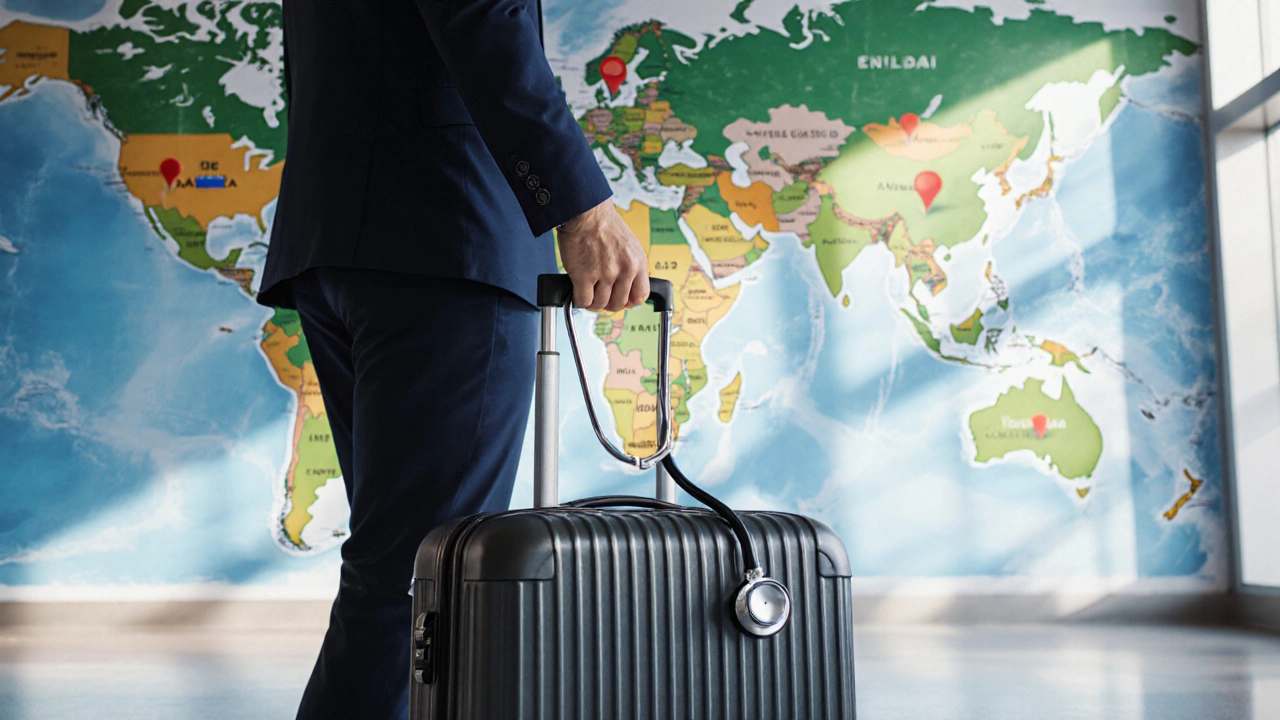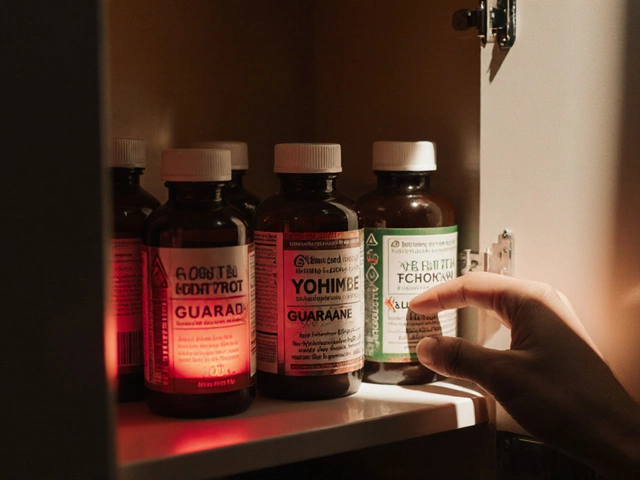Medical Tourism Cost Calculator
Savings Analysis
You could save or compared to U.S. prices.
This translates to in savings.
When Americans look beyond U.S. borders for care, medical tourism refers to traveling to another country to receive medical treatment that’s either unavailable, unaffordable, or delayed at home becomes a practical option.
Why Americans Choose to Go Abroad
Three forces drive the trend:
- Cost pressure: A standard knee replacement can cost $45,000 in the United States, while the same surgery in many overseas clinics runs under $10,000.
- Wait times: The Mayo Clinic reports average wait periods of 4‑6 weeks for elective cardiac procedures; patients often find a month‑long slot in Mexico or Costa Rica within days.
- Specialized expertise: Certain complex treatments-like stem‑cell‑based fertility protocols-are only offered in a handful of Indian hospitals.
Insurance coverage gaps also push patients to look for cash‑pay alternatives that preserve quality while trimming the bill.
Top Five Countries Where Americans Seek Care
Below are the destinations that dominate the U.S. outbound medical tourism flow, based on 2023‑2024 data from the International Patient Travel Association.
Mexico offers proximity to the U.S., low‑cost dental and cosmetic procedures, and a growing network of JCI‑accredited hospitals
Mexico’s border states-Baja California, Sonora, and Chihuahua-host more than 200 clinics that cater to American patients. Dental implants average $1,200 compared with $4,500 in the United States, and a 2‑hour flight from Dallas makes follow‑up visits painless.
India is known for world‑class cardiac and orthopedic centers, high‑volume experience, and treatment costs that can be 60‑80% lower than in the U.S.
India’s private hospital market treats over 150,000 foreign patients a year. A coronary artery bypass graft (CABG) costs roughly $7,000, versus $80,000 in the U.S., while still meeting International Society for Quality in Health Care standards.
Thailand has become a hub for cosmetic surgery, joint replacement, and wellness retreats, supported by English‑speaking staff and government‑backed tourism incentives
Bangkok’s Bumrungrad International Hospital, accredited by Joint Commission International, performs more than 5,000 spine surgeries annually for overseas patients. The average cost for a lumbar fusion is $12,000, a fraction of the $55,000 price tag at many U.S. centers.
Turkey combines European‑level medical standards with strategic location between Europe and the Middle East, attracting patients seeking plastic and hair‑restoration procedures
Istanbul’s clinics report a 96% satisfaction rate for rhinoplasty and hair‑transplant surgeries. Pricing for a full‑body lift hovers around $15,000, compared with $30,000‑$45,000 stateside.
Costa Rica offers a tropical setting, a highly regulated private‑hospital sector, and significant savings on dental and orthopedic care
Because of its universal health‑care framework, Costa Rica maintains strict quality controls. Patients traveling from California often combine a knee arthroscopy ($9,000) with a short vacation, cutting total expenses by more than 70%.

Procedures Most Frequently Sought by Americans
While every travel story is unique, data shows a clear hierarchy of services:
- Dental care includes implants, veneers, and full‑mouth reconstructions - accounts for 38% of outbound cases.
- Cardiac surgery such as bypass grafting and valve replacement - 12% of cases, driven by cost and expertise gaps.
- Orthopedic surgery including hip, knee, and spine procedures - 18% of travelers.
- Cosmetic and plastic surgery - 22% of outbound patients, particularly breast augmentation and liposuction.
- Fertility treatment IVF cycles, egg freezing, and surrogacy arrangements - 8% of cases, with India and Turkey leading the market.
How to Choose a Safe Provider
- Verify international accreditation (JCI, NABH, ISO 9001). Most reputable clinics display the certification badge on their website.
- Check physician credentials: board certification in the specialty, years of experience, and peer‑reviewed publications.
- Ask for before‑and‑after case studies that include patient demographics similar to yours.
- Inspect post‑procedure support: guaranteed follow‑up visits, tele‑medicine check‑ins, and a clear emergency‑evacuation plan.
- Read independent reviews on platforms such as Patients Beyond Borders and the Medical Tourism Association’s member directory.

Cost Savings Snapshot
| Country | Key Procedure | U.S. Avg. Cost | Destination Avg. Cost | Savings % |
|---|---|---|---|---|
| Mexico | Dental implant (single) | $4,500 | $1,200 | 73% |
| India | CABG (heart bypass) | $80,000 | $7,000 | 91% |
| Thailand | Lumbar fusion | $55,000 | $12,000 | 78% |
| Turkey | Rhinoplasty | $13,000 | $3,500 | 73% |
| Costa Rica | Knee arthroscopy | $30,000 | $9,000 | 70% |
Next Steps for Prospective Patients
Start with a clear health goal, then follow this three‑step roadmap:
- Gather estimates from at least three accredited clinics in different countries. Use the cost‑savings table above as a benchmark.
- Schedule a video consult with the surgeon or dentist. Ask about anesthesia protocols, infection‑control measures, and language support.
- Plan logistics early: travel visas, accommodation near the treatment center, and a trusted local coordinator who can assist with paperwork and post‑op care.
Remember, medical tourism isn’t a gamble when you do thorough homework. The right combination of price, quality, and convenience can turn a daunting health issue into an affordable, well‑managed experience.
Frequently Asked Questions
Is medical tourism safe for Americans?
Safety depends on the provider, not the destination. Choosing JCI‑accredited hospitals, verifying physician credentials, and arranging follow‑up care dramatically reduce risk. Most patients report outcomes comparable to U.S. standards when they follow the guidelines above.
How do insurance companies view overseas treatments?
Most U.S. insurers consider overseas care as out‑of‑network and require cash payment up front. However, a growing number of specialty plans now reimburse a portion of approved procedures if the patient provides detailed invoices and proof of accreditation.
What are the most common complications?
Complications mirror those seen domestically: infection, delayed wound healing, and anesthesia reactions. The key to minimizing them is selecting a clinic with robust sterility protocols and a clear emergency evacuation plan.
Can I combine treatment with a vacation?
Yes, many patients schedule a short stay before or after the procedure. Just make sure you have a post‑op recovery window recommended by the surgeon-usually 5‑7 days for dental work and 2‑3 weeks for major surgery.
What paperwork is required for travel?
A valid passport, a medical visa (if required), and a copy of your medical records for the foreign doctor. Some countries also ask for a letter from your U.S. physician confirming the need for the procedure.








